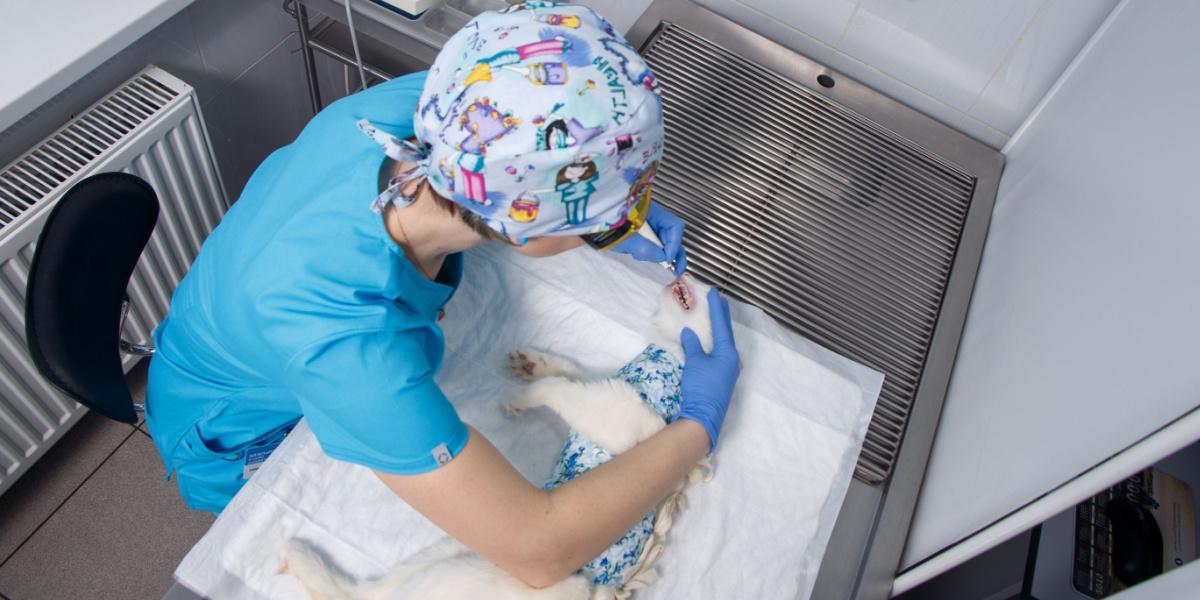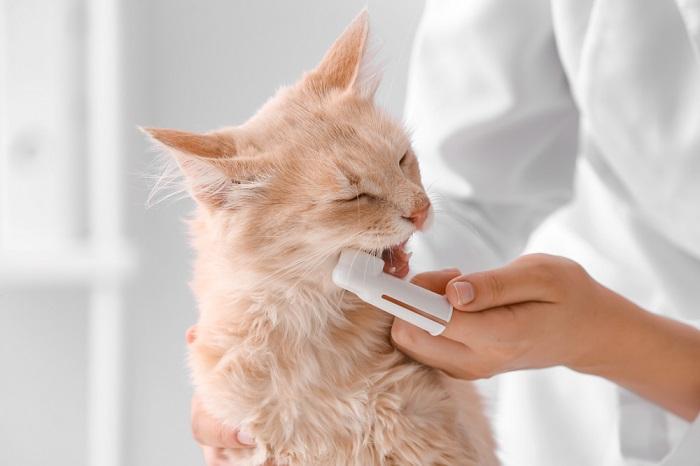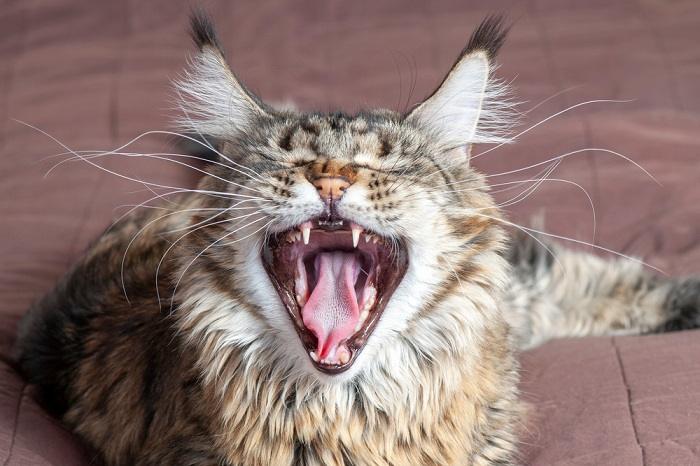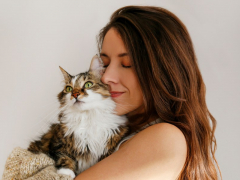
Most people have undergone a dental procedure at some point in their life, and many have ongoing dental issues requiring treatment. But how often do we think about our pet’s teeth? Dental disease in pets is common. In fact, it has been shown to be one of the most common disorders in cats coming to the vet1. Dental problems can be painful, and potentially cause health problems in other parts of the body, such as the heart and kidneys.
Dental disease, which is common in cats, causes pain and difficulty eating, and can lead to other health problems. Teeth cleaning should be performed by a veterinary professional, and usually costs around $200 to $400, but might be more depending on several factors. Daily brushing at home is best for preventative care, but most cats will need a professional teeth cleaning around once a year.Key Takeaways
Regular teeth cleaning is important, and there are plenty of ways to optimize your cat’s oral health. Professional dental cleaning might cost between $200 to $400 or more. Let’s look at why this is an important part of pet care, and what exactly cat teeth cleaning involves.
Do Cats Need Teeth Cleaning?
Diseases related to a cat’s mouth, teeth, and gums are very common, with studies showing that more than 50% of cats over 4 years old suffer from some form of dental disease. Problems with dental health can cause pain and discomfort, leading to difficulties in eating and affecting a good quality of life. There can also be consequences for your cat’s overall health, with the potential for infection to spread to other parts of the body.
The accumulation of plaque is the first sign of dental disease. This is the film of bacteria that forms over the surface of the tooth. Plaque buildup, if not brushed away, can harden into tartar, or calculus. This is more clearly visible as a yellow or brown crust on the surface of the tooth. It is hard, so cannot usually be removed by simple tooth brushing.
Tartar buildup attracts more bacteria, which accumulate around the gum line and cause gingivitis, the process in which the gums become inflamed and therefore red, swollen, and sore. If gingivitis is not controlled, it can progress to periodontal disease, tooth decay, and even tooth loss.
The potential for a tooth abscess, or an infection spreading to other parts of the body, increases with progressive and ongoing gum disease.
Symptoms of Dental Disease in Cats
Cats are very good at masking signs of pain and disease, a trait left over from their wild cat days when they were potential prey as well as predators. Due to their strong survival instincts, cats will often keep eating, even with severe dental problems. Often, an examination of the mouth, teeth, and gums under anesthesia or sedation is required for a full assessment of a cat’s oral health.
However, you can look for some signs that something isn’t quite right, including:
- Pawing at the mouth
- Jaw chattering
- Head shaking
- Bad breath (halitosis)
- Drooling (saliva may be pink due to blood)
- Dropping food from the mouth
- Becoming pickier with food, or reduced appetite
If your cat is showing any of these signs, a checkup with a veterinarian is recommended.
Basic Dental Hygiene for Cats

Daily toothbrushing is the best way to prevent dental disease.
The best method of preventing dental disease in cats is to reduce plaque building up on the teeth. This is best done by regular tooth brushing at home. Always use a cat toothpaste and toothbrush—human toothpaste is not safe for cats due to its high fluoride content.
Start slowly, perhaps by just rubbing a little of the toothpaste onto your cat’s teeth to let them get used to the flavor, and then progress to short sessions with a finger brush. Gradually build up until you can brush all their teeth.
Try and make routine cleaning a part of your daily schedule. Never try to remove tartar from your cat’s teeth with an instrument, as this carries a high risk of injury to both the cat and you, and might damage the surface of the tooth.
If you can’t brush your cat’s teeth, there are some more hands-off ways to reduce plaque, although they are not as effective as brushing. Feeding kibble rather than wet cat food is recommended for oral health, and there are some dental treats and dental chews available.
There are also gels and products to add to your cat’s water that aim to reduce plaque formation, although care must be taken that these don’t put your cat off drinking their water. Look for products with the VOHC (Veterinary Oral Health Council) seal of approval.
A hugely important part of preventative care is to take your cat for regular checkups at the vet. Your veterinarian will be able to perform a detailed oral examination and look for signs of tartar, gum disease, and other problems such as resorptive lesions, which are common in cats.
Most cats will require a professional cat dental cleaning around once a year, perhaps more if they need extensive dental work. Vets can also advise on home dental care, diet, and other factors.
What Happens When You Take Your Cat for Teeth Cleaning?
The American Animal Hospital Association (AAHA) has a set of guidelines for pet dental work, which includes a 12-step guide to a professional teeth cleaning. Here’s a summary:
The vet will perform a full oral examination of your cat, and assess their suitability for general anesthesia (this might involve laboratory tests such as blood work). Your cat is then anesthetized, and x-rays are taken of the mouth to look at the tooth roots and assess alignment and any signs of infection.
Tartar and plaque are removed from all surfaces of the teeth, above and below the gum line, and the clean teeth are assessed individually using a probe to check for pockets, lesions, or fractures. Any therapy, such as root canals or tooth extractions, is performed with permission from the pet owners.
The teeth are polished, which smooths the enamel to aid the prevention of tartar formation. After a final check, your cat will be woken from anesthesia and monitored until safely awake and ready to go home.
Cat Dental Cleaning Cost
The costs of a professional teeth cleaning vary based on the clinic location, and on individual pet factors, such as any additional tests performed and the length of the procedure. Basic cat teeth cleaning cost is usually around $200 to $300, rising to $400 or more with additional costs such as tooth extractions, further x-rays, or medications.
If you think your cat has dental problems but you are concerned about cost, speak to your veterinarian. They will be able to provide a more accurate estimate after examining your cat and discussing options for treatment.
If your cat needs dental work, remember to check your pet insurance coverage. Some insurance companies cover dental work, but some do not. The amount covered, if any, as well as any exclusions, will vary depending on your individual policy.
Final Thoughts

Daily brushing at home and once-yearly professional dental cleanings will keep your cat’s teeth and mouth healthy.
Dental health is a common and important issue for cats, and regular checkups and cleanings are recommended to prevent pain, eating difficulties, and other health issues. Full teeth cleaning should always be performed by a veterinarian, under anesthesia, and usually costs around $200 to $400, but might cost more depending on where you live and your cat’s individual needs. Maintaining good oral hygiene through brushing is the best way to prevent dental disease, but most cats will need a professional teeth cleaning around once a year.
Also Read: Cat Teeth Plaque & Tartar: Causes, Symptoms, & Treatment
Frequently Asked Questions
How much is it to clean cats’ teeth?
A professional cat teeth cleaning will cost around $200 to $400. This might vary depending on the location of your vet clinic, and other factors such as your cat’s age and health, and how severe the dental disease is.
Is cat teeth cleaning necessary?
Dental disease is common in cats and can cause multiple health issues. Regular teeth cleaning is recommended to reduce the risk of severe diseases such as gingivitis, tooth decay, and tooth loss.
How often should a cat’s teeth be cleaned?
Most cats will need a professional teeth cleaning around once a year. Ideally, optimal oral hygiene should be observed at home with daily brushing with a cat toothpaste and toothbrush, which will help prevent problems.
-
O’Neill, D., Church, D., McGreevy, P., Thomson, P. & Brodbelt, D. (2014). Prevalence of disorders recorded in cats attending primary-care veterinary practices in England. The Veterinary Journal, 202(2), 286-291.







